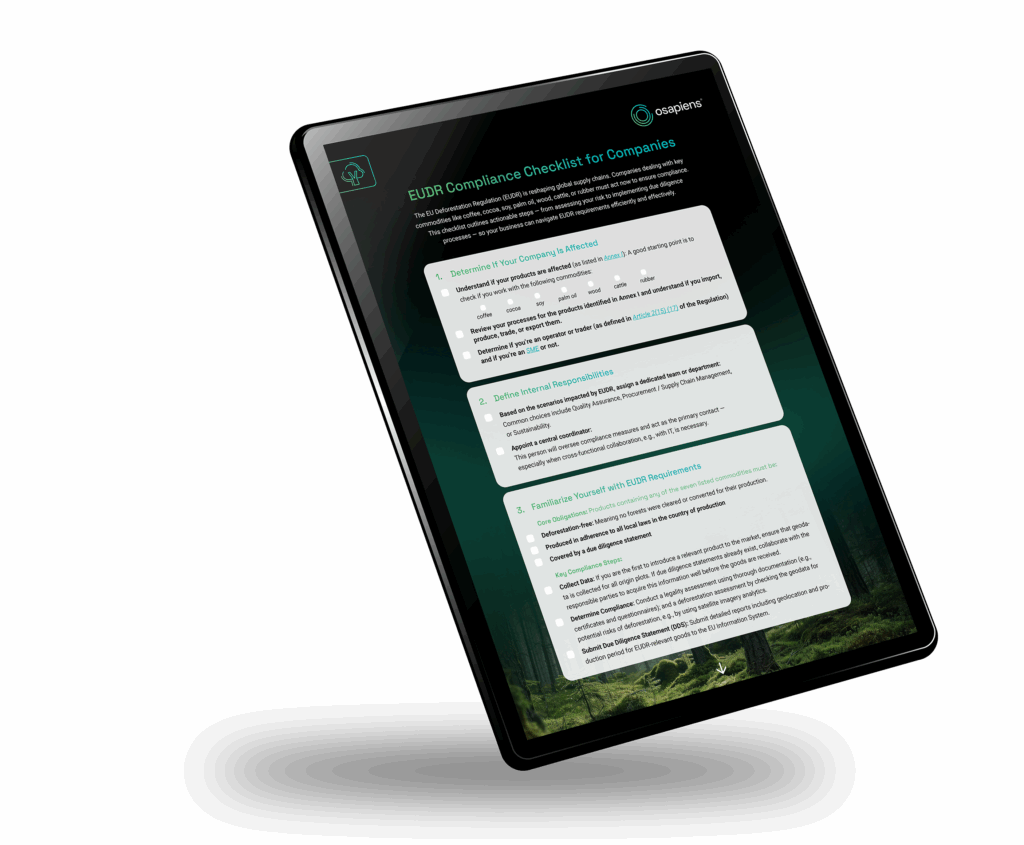Community
osapeers.org
This article is available in
About this article

Jessica Hollfelder
AuthorAssigned categories
EUDR will soon become a reality for thousands of companies in Europe — and for those ready to see the bigger picture, it can mark the beginning of their journey to the Brightside. But while the regulation is clear, the path to compliance often isn’t. Where to start? What’s missing? And how to make sure you’re not overlooking critical steps? That’s where a good checklist comes in.
The EU Deforestation Regulation brings clear obligations: deforestation-free sourcing, full traceability of origin, and a due diligence statement for every affected product. But what exactly does that mean for your day-to-day operations?
The first step is understanding whether your company is affected. Are you dealing with commodities like coffee, cocoa, soy, wood, rubber, cattle, or palm oil? Are you an operator or a trader? These questions determine your obligations — and how deeply you’re involved in compliance processes.
Once that’s clear, the next layer is data. You’ll need:
But it’s not just about collecting data. To meet EUDR requirements, companies must also implement clear processes — including regular risk assessments, internal coordination between departments like procurement and sustainability, and a reliable way to submit due diligence statements via the EU system.
It’s a lot. And for most companies, it means coordinating between procurement, sustainability, IT, and legal teams. That’s why gaining structure is so important — and where the EUDR checklist can help.
The osapiens EUDR checklist helps you organize your response into clear stages:
You don’t need to have everything in place from day one. But you do need to know where to begin.

Understanding what’s required is only the first step. The next is getting started — and making progress visible. A checklist gives you the structure, but execution happens through clear ownership, smart planning, and the right tools.
This is where many companies realize: manual processes are simply not scalable. Coordinating data requests, verifying documents, tracking timelines — all of this becomes overwhelming fast.
Digital tools like the osapiens HUB for EUDR help turn plans into action:
Whether you’re at the very beginning or already working through the details, a digital platform ensures you stay on track — and adapt as regulations evolve. The checklist gives direction — execution turns it into progress. And ultimately, that’s what being on the Brightside of EUDR is all about: making complexity manageable and turning regulation into opportunity.
EUDR compliance isn’t just a regulatory hurdle. It’s a structured journey — and a chance to build a smarter, more transparent supply chain.
Start with clarity. Use the checklist to understand where you stand. Then take the next step — with confidence, structure, and the right technology.
That’s how companies move to the Brightside of EUDR — one decision at a time.
